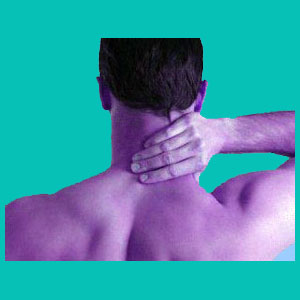
Being labeled with a cervical disc disease diagnosis is often the beginning of a long and frustrating treatment protocol for many patients. Cervical DDD, much like lumbar degenerative disc disease, is virtually universal and affects almost every adult man and woman on this planet. The intervertebral degenerative processes are expected to occur and remain asymptomatic in almost every case. In essence, most patients who have disc desiccation in their cervical spines will not suffer any related pain. However, cervical disc degeneration is not completely innocent, since the intervertebral aging process is a known contributor to the formation of cervical osteoarthritis, cervical facet joint syndrome and even cervical intervertebral bulging, herniation and rupture.
This commentary focuses on the diagnosis of disc degeneration in the neck. We will explore the ubiquitous nature of disc desiccation, as well as some common problems within the diagnostic sector.
Cervical Disc Disease Diagnosis Process
Disc disease can be discovered through virtually any form of medical imaging technology. X-ray, CT scan and MRI can all detect disc desiccation and determine the extent of the lost of disc mass. However, MRI is best suited for actually imaging the affected levels of the spine in the most vivid detail, allowing an unparalleled look at the surrounding vertebral anatomy.
Disc degeneration can not be diagnosed without imaging of the spine, but nevertheless, we can tell you for sure that it exists in 99% of healthy adults past the age of 30. Many people demonstrate intervertebral desiccation far younger, such as in my own case profile: I was diagnosed as suffering from drastic L4/L5 and L5/S1 desiccation at the age of 16.
Disc degeneration is now considered a completely normal part of getting older, whereas just a few decades ago, many doctors still viewed it as a pathological disease process, hence its frightening nomenclature.
Understanding Cervical Disc Disease
Disc degeneration is often very pronounced in the neck. The head is a weighty burden and the neck must bend, flex and support the head through an exhaustive range of motion, for life. The resulting wear on the cervical spine enacts predictable structural intervertebral changes, including the loss of moisture and moisture-retaining qualities, a decrease in mass, diameter and circumference, and the possible development of various arthritic changes in the surrounding vertebral bones.
These consequences are all expected changes in the spine and are not inherently painful whatsoever. However, some of the ramifications of disc desiccation can become problematic, including some forms of arthritis or intervertebral protrusion.
What is interesting is that doctors and therapists continue to use DDD as an exclusive explanation for severe and chronic neck pain, despite the overwhelming amount of scientific research which clearly supports the contrary viewpoint. In over 97% of diagnosed cases where disc desiccation is theorized to be the primary source of pain, there is no pathological process identified that could possibly explain the current symptomology. It is vital to remember that discs themselves do not feel pain and can wear away without the patient ever experiencing any symptoms at all.
Cervical Disc Disease Diagnosis Concerns
Diagnosing any normal and inherently pain-free condition as the source of symptoms is ludicrous in most scenarios. It is like blaming pain on age alone, without any documentable pathology. Disc desiccation is certainly not a disease and is nothing out of the ordinary to experience in the mid to low cervical spinal levels. It is true that extreme cases of degenerated discs can become problematic, since virulent degeneration can facilitate herniation-related and arthritic stenosis, narrowing the central and/or neuroforaminal canals. However, it must be said that these cases are the gross exceptions to the rule of benign disc deterioration that we all experience.
Therefore, it is unwise to accept that diagnosis of disc disease as the sole cause of pain, unless there is a definitive pathological process that can be identified, verified and confirmed by multiple physicians from several different medical disciplines.
Diagnosing Cervical Disc Disease
When we correspond with patients who have been diagnosed with DDD as the primary source of their symptoms, certain patterns typically emerge. These are people almost always have chronic neck pain which defies explanation. The patients demand answers, so their doctors do their best to find an explanation within the anatomy of the spine. Most physicians will not look elsewhere if a vertebral or intervertebral irregularity exists. This is why it is so crucial to change the perception of disc degeneration to one of normalcy, rather than abnormalcy.
Meanwhile, patients are placed into treatment for “getting older”, rather than for their true source of neck pain. Therefore, the care provided is not targeting the correct origin of the symptomology.
Furthermore, even if it were accurately directed, the treatments utilized for cervical disc disease are usually symptomatic, meaning that they have no hope of providing anything more than temporary relief, given the best case scenario.
Physicians must stop falling back into bad habits and must expand their diagnostic efforts to locate logical sources of symptoms, rather than relying on the failings of the past to guide their future patient interactions. Therefore, doctors must take more time and effort to search out the actual causation of pain, by considering all possible options, including alternate spinal factors, soft tissue factors, postural factors, disease-related factors, and of course, mindbody factors.
Herniated Disc > Cervical Degenerative Disc Disease > Cervical Disc Disease Diagnosis





